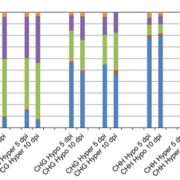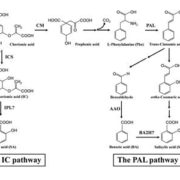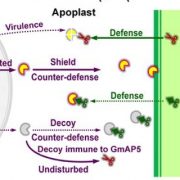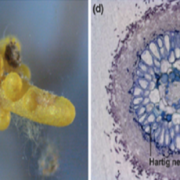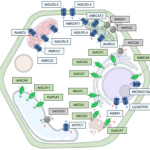Review: Recent discoveries show novel sensors and regulation of reactive oxygen species (Nature Plants)
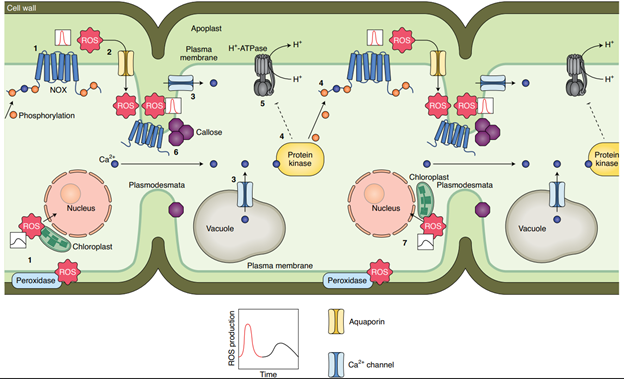 Reactive Oxygen Species (ROS) are produced as metabolic byproducts and are vital participants in development and stress responses. However, ROS can be damaging, and are subcellularly localized to mitigate toxicity. Perception of pathogen attack leads to apoplastic ROS production through Respiratory Burst Oxidase Homologs (RBOHs), which in turn leads to transduction of immune signaling. Perception of ROS likely occurs through redox modifications such as the oxidation of cysteines on ROS-interacting proteins. In Arabidopsis, the receptor-like kinase Hydrogen-Peroxide-Induced Ca2+ Increases 1 (HPCA1) has been implicated in direct sensing of H2O2, a common ROS molecule. H2O2 modifies cysteines in the unique hydrogen peroxidase domain of HPCA1, resulting in stomatal closure. There are likely other ROS sensors in addition to HPCA1, as this protein is not involved in stomatal closure in response to common microbial elicitors. Post translational modifications (PTM) of RBOHs can modulate the ROS response through altered protein capabilities and stability. The amino termini of RBOHs are activation sites, which are phosphorylated in response to stress and other stimuli. The carboxyl terminus is a site of both activating and inhibitory PTMs, including ubiquitination causing RBOH degradation. The localization, sensing, and production of ROS are tightly regulated to produce a dynamic balance between cellular function and oxidative damage. (Summary by Marlo Hall @marloXplants). Nature Plants 10.1038/s41477-021-00887-0
Reactive Oxygen Species (ROS) are produced as metabolic byproducts and are vital participants in development and stress responses. However, ROS can be damaging, and are subcellularly localized to mitigate toxicity. Perception of pathogen attack leads to apoplastic ROS production through Respiratory Burst Oxidase Homologs (RBOHs), which in turn leads to transduction of immune signaling. Perception of ROS likely occurs through redox modifications such as the oxidation of cysteines on ROS-interacting proteins. In Arabidopsis, the receptor-like kinase Hydrogen-Peroxide-Induced Ca2+ Increases 1 (HPCA1) has been implicated in direct sensing of H2O2, a common ROS molecule. H2O2 modifies cysteines in the unique hydrogen peroxidase domain of HPCA1, resulting in stomatal closure. There are likely other ROS sensors in addition to HPCA1, as this protein is not involved in stomatal closure in response to common microbial elicitors. Post translational modifications (PTM) of RBOHs can modulate the ROS response through altered protein capabilities and stability. The amino termini of RBOHs are activation sites, which are phosphorylated in response to stress and other stimuli. The carboxyl terminus is a site of both activating and inhibitory PTMs, including ubiquitination causing RBOH degradation. The localization, sensing, and production of ROS are tightly regulated to produce a dynamic balance between cellular function and oxidative damage. (Summary by Marlo Hall @marloXplants). Nature Plants 10.1038/s41477-021-00887-0


